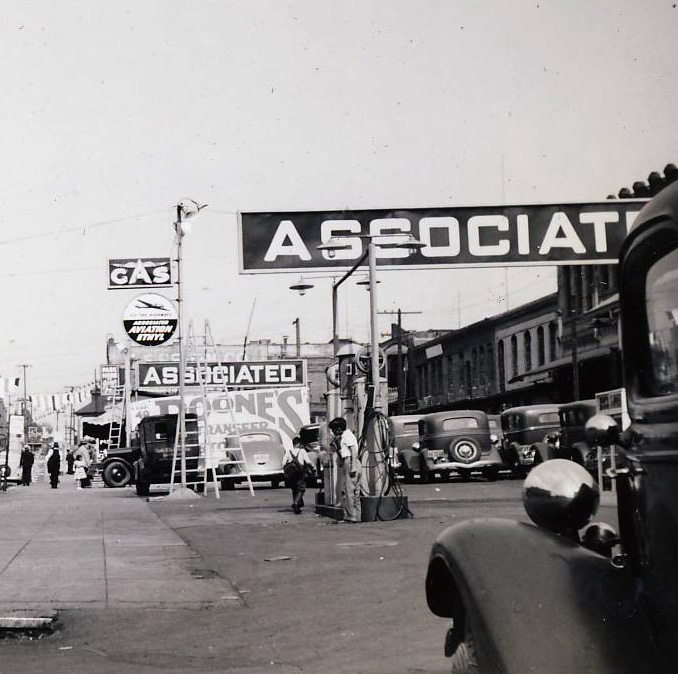Jennie Lee Taylor
Jennie Lee Taylor was one of the first Chinese American women welders.

About
Written by Annie Luong
Jennie Lee Taylor was born on August 30th 1919, a year after the First World War. Her father and mother came from China with her brother, Jimmy, to Canada and down to New York in 1918. Her parents had a restaurant in Brooklyn, New York on Fulton Street. The family later moved to California due to her father’s health.
In California, her father started a laundry business in Los Angeles. During the 1930s, Jennie and her brother Jimmy attended California St. School, Central Jr. High and graduated from Belmont High. Jennie’s family was not greatly affected by the Depression due to the help of the Chinese American community.
When the Japanese invaded Shanghai in 1937, Jennie’s uncle was killed. At the age of twenty-three, she became involved in protests against the Japanese invasion and US exporting scrap iron to Japan in Long Beach. Jennie collected money and sent it to the Chamber of Congress to send it to the refugees during the War against Japan. In order to ensure their safety, Jennie and other Chinese Americans wore buttons that said, “I am Chinese” to help avoid discrimination.Jennie was twenty-two when Japan attacked Pearl Harbor. Many women went into welding school and worked in the defense industry. Jennie attended the Warren School of Aeronautics and passed the test at Douglass Aircraft Company as a top scorer, however they didn’t hire her. Six months later, Douglass needed aluminum welders and Jennie applied for the second time. Jennie was hired and was certified as “the first Oriental Woman Welder.”
Features
Jennie Lee Taylor Interview with William Gow
Chinatown Remembered Project
April 22nd, 2007, 2pm
William Gow: How did you life change after Pearl Harbor?
Jennie Lee Taylor: Well after that then I went to welding school, I think. Because they were hiring people. Hiring women to work in the defense. It was the Warren School of Aeronautics. We happened to know the owner. So he let my brother and I learn how to weld. It was on Washington Blvd I don’t know were it is now.
William Gow: What were most of your classmates like?
Jennie Lee Taylor: They were mostly men. They taught everything about you know working in the Defense factory. I went and took up aluminum welding. And yeah…
William Gow: How many other women were there?
Jennie Lee Taylor: Not too many. I didn’t pay too much attention. I just went to do what I had to do and that was it.
William Gow: Were you able to get a job as a welder?
Jennie Lee Taylor: I applied at Douglas and I passed the test #1. But they said I was Oriental. They didn’t hire me. So I went to work for a small place on Olympic welding aluminum boxes. You know aluminum is a funny metal to weld because you can’t see it. Its not like steel that when you heat it up it turns red. Where as aluminum it just melts. I worked at this place six months. Then I went and applied again at Douglas because they needed Aluminum welders.
William Gow: Were there other Chinese at Douglas?
Jennie Lee Taylor: Oh yes, lots of them. My brother was there. He was hired as an aluminum welder and there were other people all over that worked as riveters…[and] other different things that they do there and they certified me and that when I got to be in the papers.
William Gow: Why were you in the paper?
Jennie Lee Taylor: Because they certified me to be the first Oriental woman welder! {Laughs}
William Gow: How did you feel?
JT: I didn’t know what if felt like or nothing. I didn’t even know I was the first. It was just weird. That’s all.
William Gow: Talk to me about your average day.
JT: I worked the graveyard shift. 12-7:30. We used to have a lot of fun {laughs}.We used to have races. I used to weld aluminum oil tanks. Aluminum gas tanks. You know whoever welded the fastest, wins a drink. Or whatever. And we just enjoyed ourselves during that time.
Jennie Lee Taylor
Becoming a Welder during the War
After Pearl Harbor, I went to welding school because they were hiring women to work in the defense industry. It was the Warren School of Aeronautics in Los Angeles. We happened to know the owner who let my brother and I learn how to weld. They were mostly men at the School. They taught everything about working in the defense factories. I went and took up aluminum welding.
I applied for a job at Douglas Aircraft, and I was the top scorer on their exam. But they said I was “Oriental” so they didn’t hire me. I went to work for a small place on Olympic Boulevard welding aluminum boxes. You know aluminum is a funny metal to weld because you can’t see it. It’s not like steel that turns red when you heat it up; aluminum just melts. I worked at this place for six months. Then I went and applied again at Douglas because they needed aluminum welders. My brother was already there as an aluminum welder, and there were other people all over that worked as riveters and other different things. They certified me. I got my picture in the papers because they certified me to be the first “Oriental” woman welder!
I worked the graveyard shift from 12 midnight to 7:30 am. We used to have a lot of fun. We used to have races. I used to weld aluminum oil tanks. Whoever welded the fastest would win a drink. We just enjoyed ourselves during that time.
Summary by William Gow
